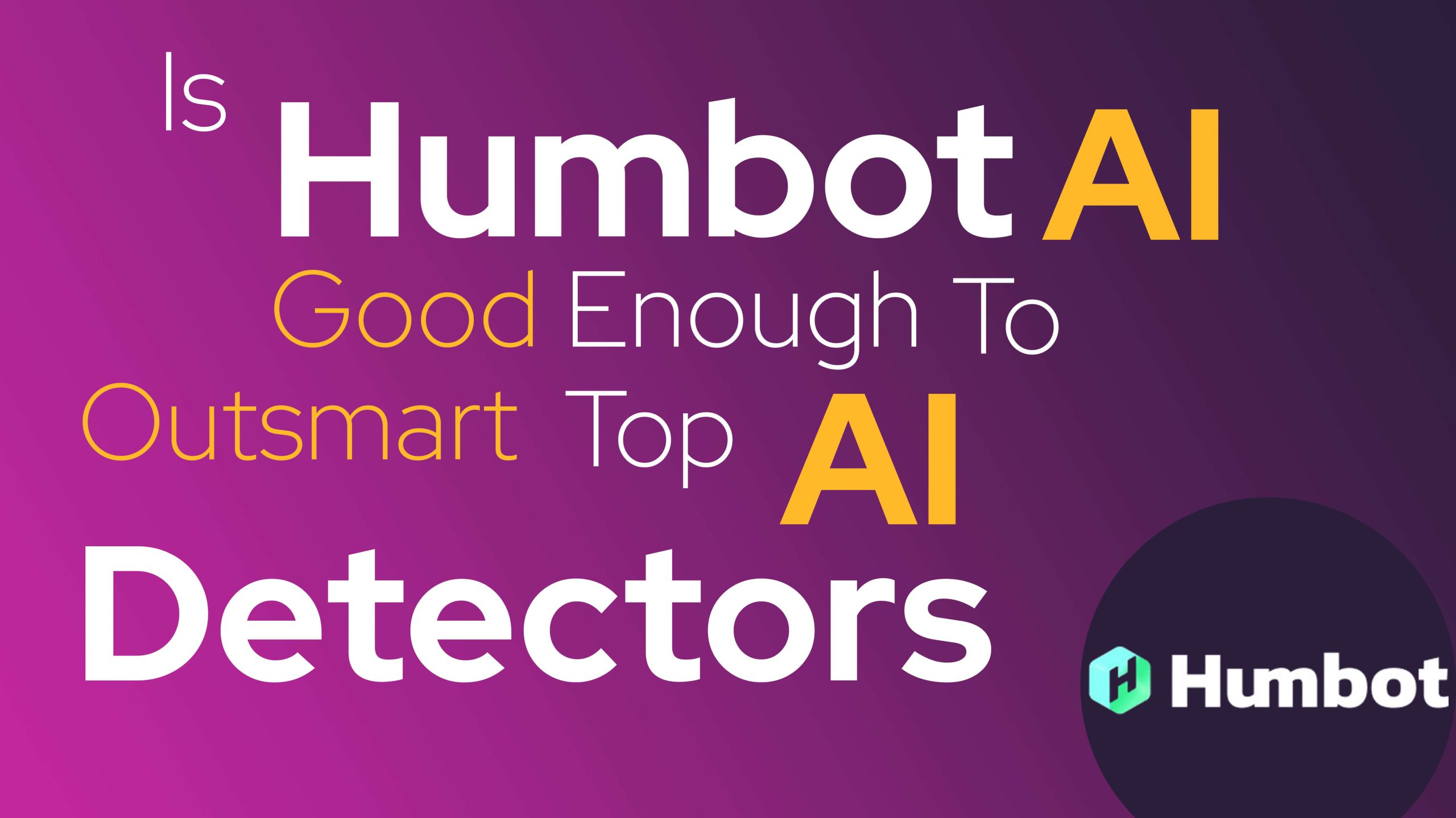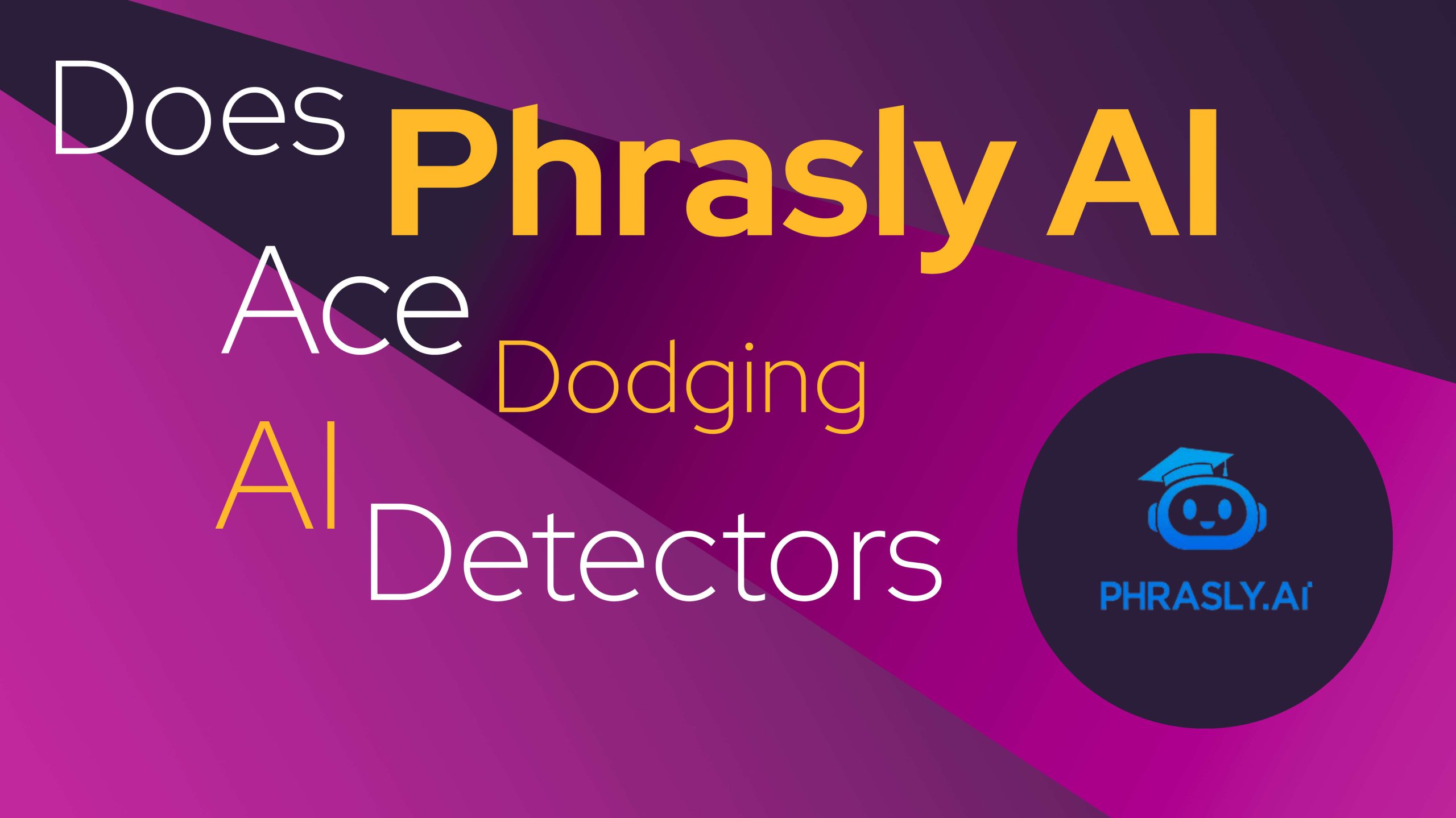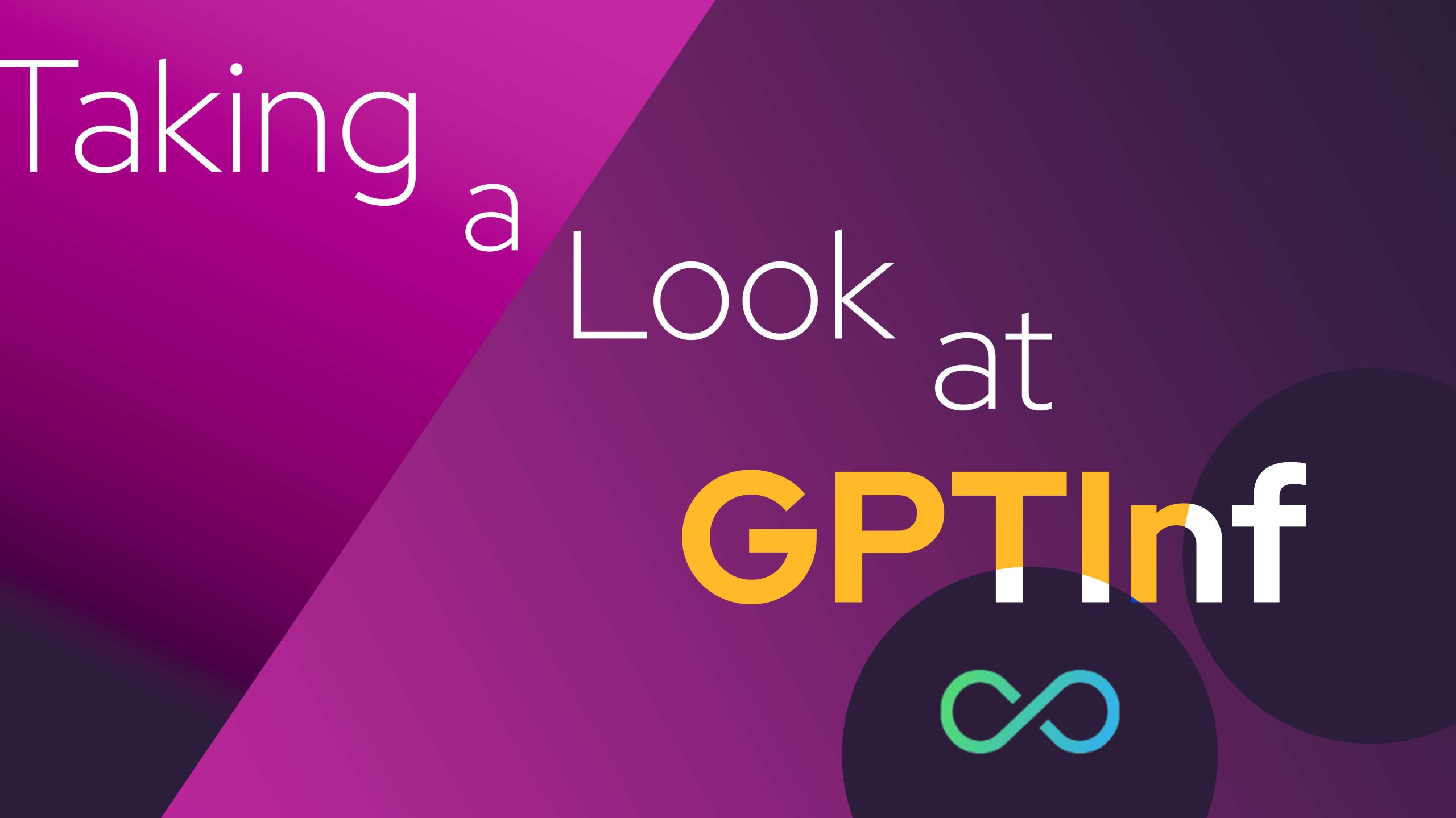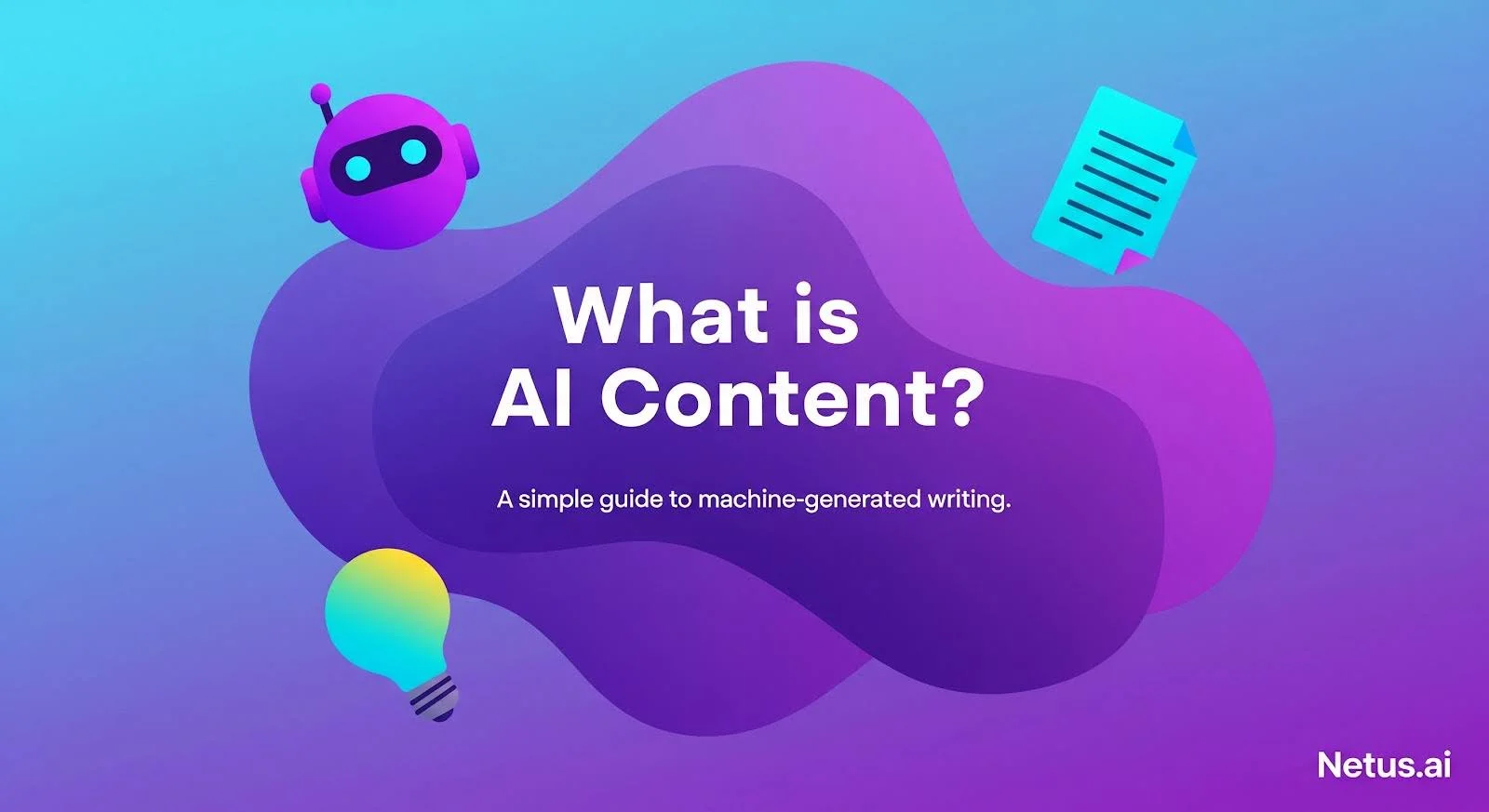We checked out Humbot.ai. Our goal? See if it turns AI-created content into something more human. We also wanted to see if it can avoid AI detectors when the top ones inspect the content.
“Make your AI text feel more human with Humbot, our advanced AI-to-human text translator.”
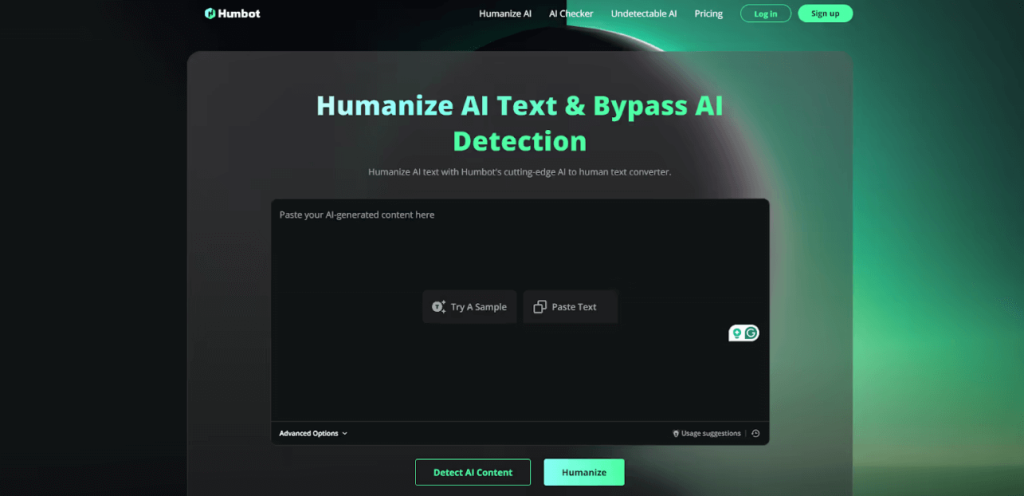
Yet again, we have an ambitious claim from a tool that claims to be able to spin content so artfully, it could supposedly slip by AI detection unnoticed.
We’re here again, trying to determine whether there’s any merit to these assertions, or if it’s just another platform promising more than it can deliver.
In this discussion, we will be covering the following:
- A closer inspection of Humbot.
- An exploration of how Humbot functions.
- The reasons behind the growing curiosity about tools like Humbot.
- A test run of this tool, using blog posts.
- Lastly, we’ll be drawing a conclusion – does content produced by Humbot really sneak under the AI radar?
What is Humbot AI?
Humbot says it can fix AI text. It fixes the text in a way that AI detectors can’t find it. It also promises that the fixed text won’t have any grammar or spelling mistakes. Humbot describes itself as an ‘AI humanizer.’ Like other tools, it says it can sneak by AI detection. What’s more, Humbot says it can do this very easily.
Why The Interest In Humbot AI?
Humbot is a clever tool. It says it can trick systems that spot AI. This is why it’s grabbing lots of attention. People are excited about using Humbot, for a good reason.
Why? Imagine this. Humbot could produce a lot of written work. It would look and sound just like a human wrote it. Plus, it could end up in a good place on Google’s list. This could bring more visitors to your site without paying a penny! So, you may have more time for things you enjoy more. Sounds good, right?
Now, if Humbot really works as it says, it’s a game-changer. This would really shake up the world of content marketing. And it could also make a big difference to academic work.
Is Humbot AI Effective? Here’s What We Found
Sure, the idea of making AI text more human-like sounds good, but the real question is, does Humbot actually do it? Thinking about that, we thought we’d test it out. We ran a few simple tests to find out the truth. Is this tool going to change the way we create content, or should we not use this tool at all?
The Test
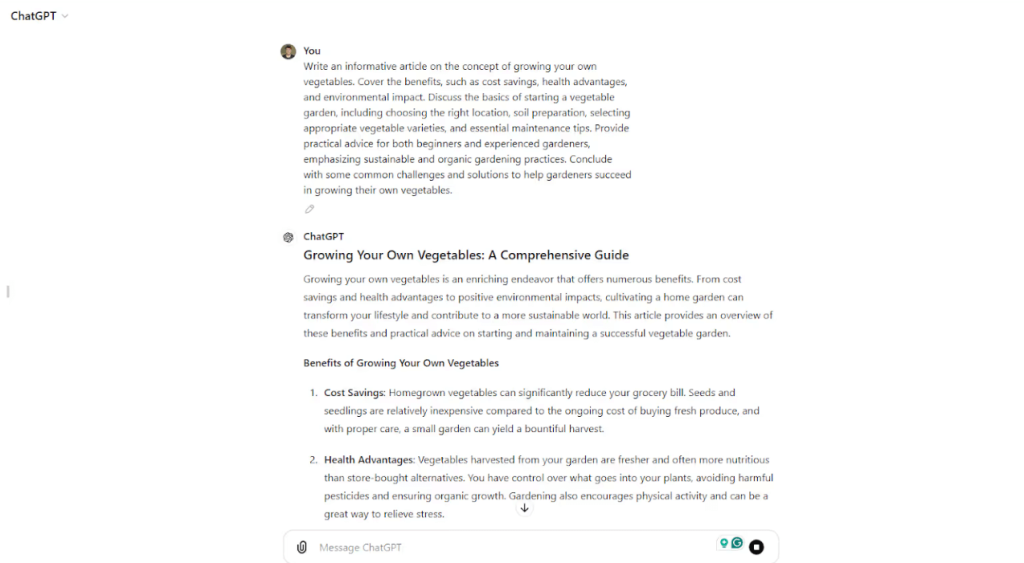
Let’s take a look at how the Humbot system performs. We did a bunch of tests to check it out.
First things first, we created an AI article with ChatGPT and chose that as our starting material. Why ChatGPT? Well, it’s currently one of the most favoured platforms for producing AI text.
Next up, we had a go at scanning that AI-made article using AI detectors mentioned by Humbot (including one named Originality.ai). What we wanted to see was if these tools could spot that our article was made by an AI.

Step 3: After creating content with ChatGPT, we used Humbot. Humbot made the content feel more ‘human’.
Step 4: In the end, we tried the test again. We did this with the new content. This was to see if the changes could be spotted as made by AI.
The prompt we used
Write an informative article on the concept of growing your own vegetables. Cover the benefits, such as cost savings, health advantages, and environmental impact. Discuss the basics of starting a vegetable garden, including choosing the right location, soil preparation, selecting appropriate vegetable varieties, and essential maintenance tips. Provide practical advice for both beginners and experienced gardeners, emphasizing sustainable and organic gardening practices. Conclude with some common challenges and solutions to help gardeners succeed in growing their own vegetables.
We used these special tools to run our test:
Netus.ai, Writer AI, GPTZero, and Copyleaks. Their job is to help us find out if a machine wrote something or a human did!
The Results
Netus.ai Score
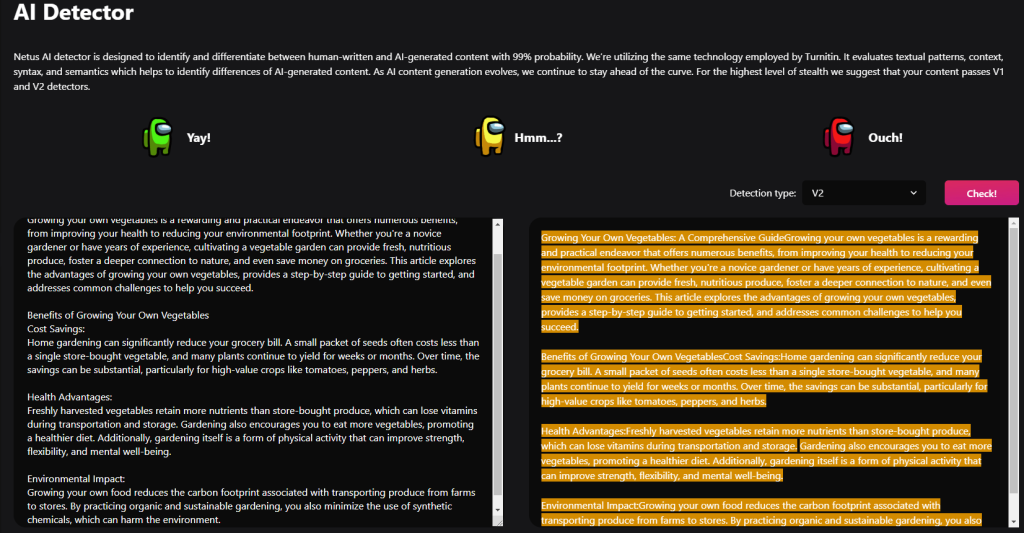
Original content: 100% AI & 0% Human-written
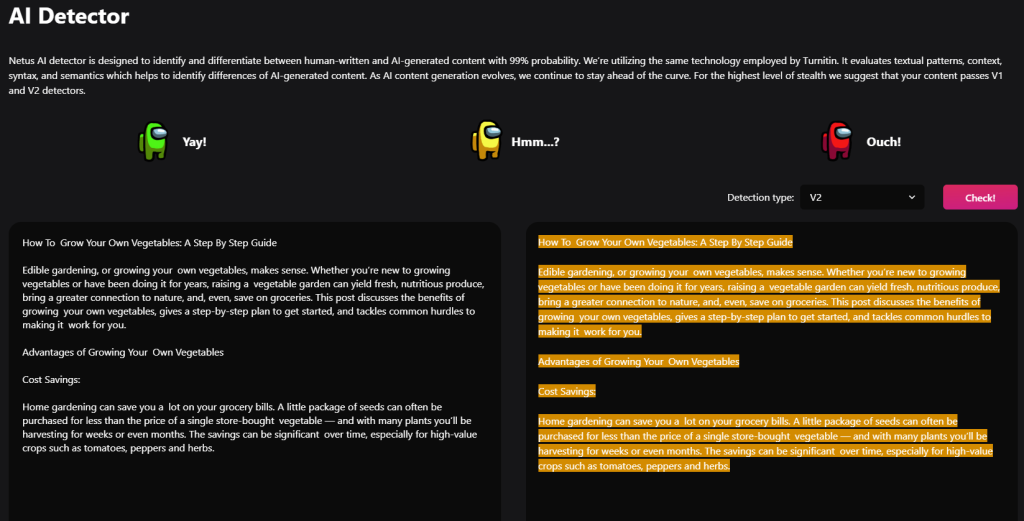
Humbot version: 100% AI & 0% Human-written
GPTZero Score
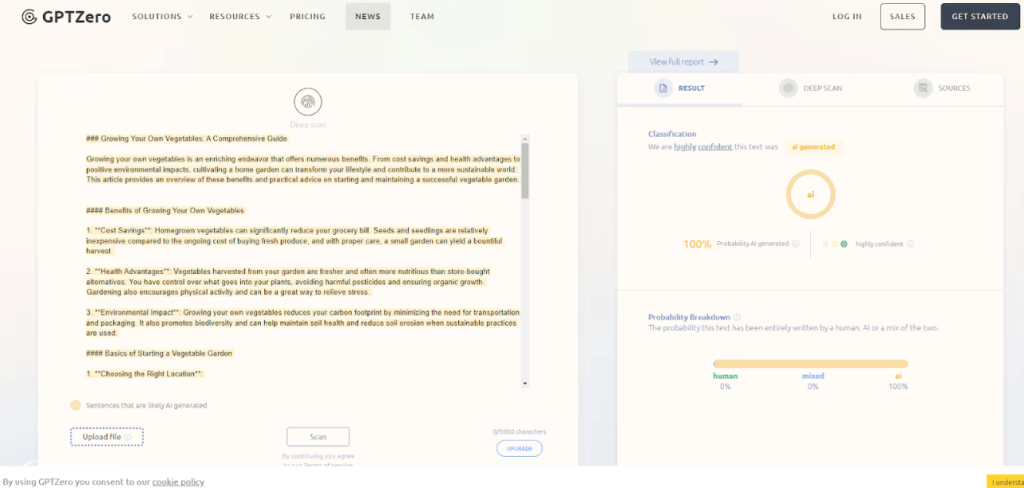
Original content: 100% AI & 0% Human-written
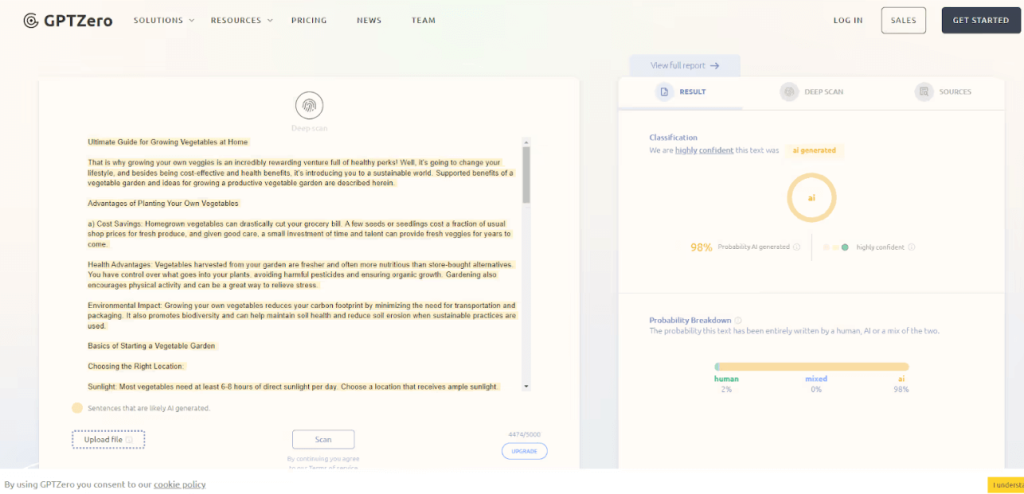
Humbot version: 98% AI & 2% Human-written
Writer Score
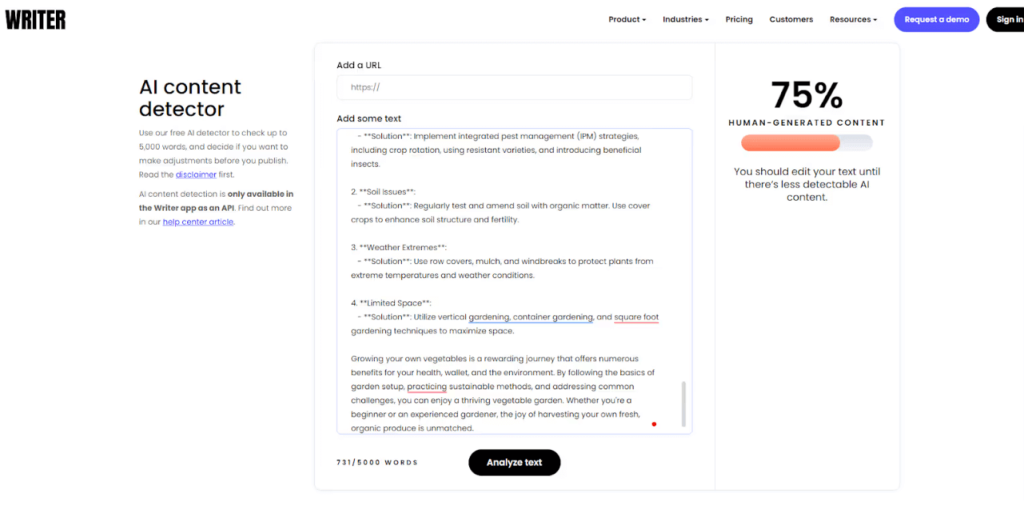
Original content: 25% AI & 75% Human-written
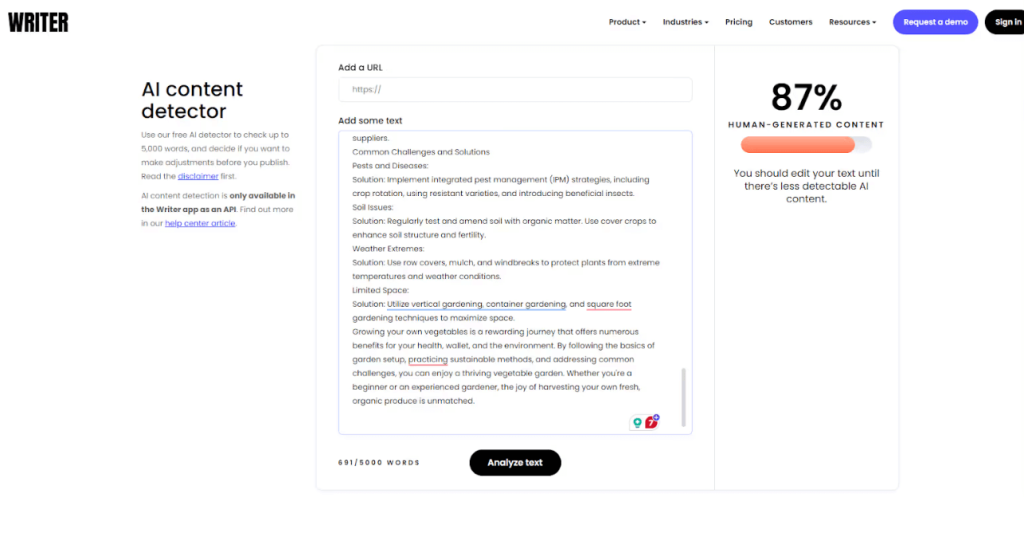
Humbot version: 13% AI & 87% Human-written
Copyleaks Score
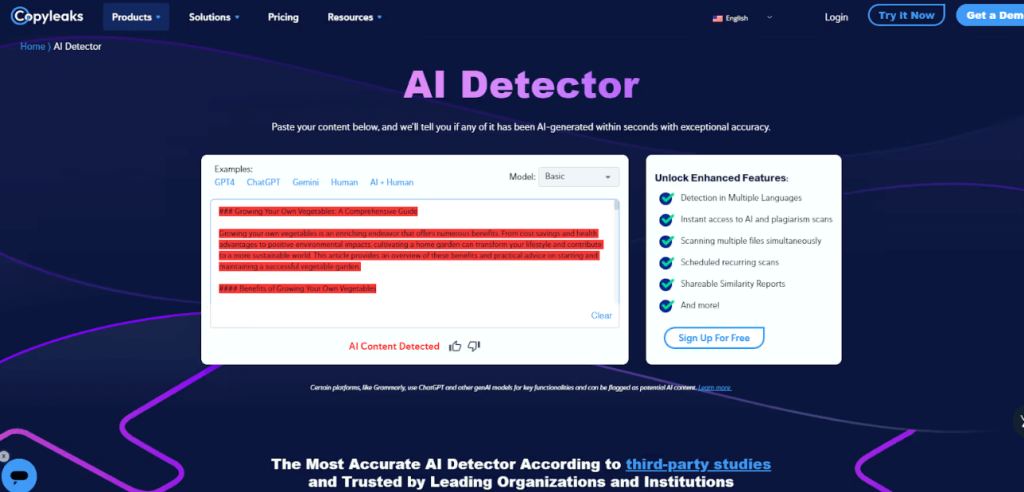
Original content: 100% AI & 0% Human-written content
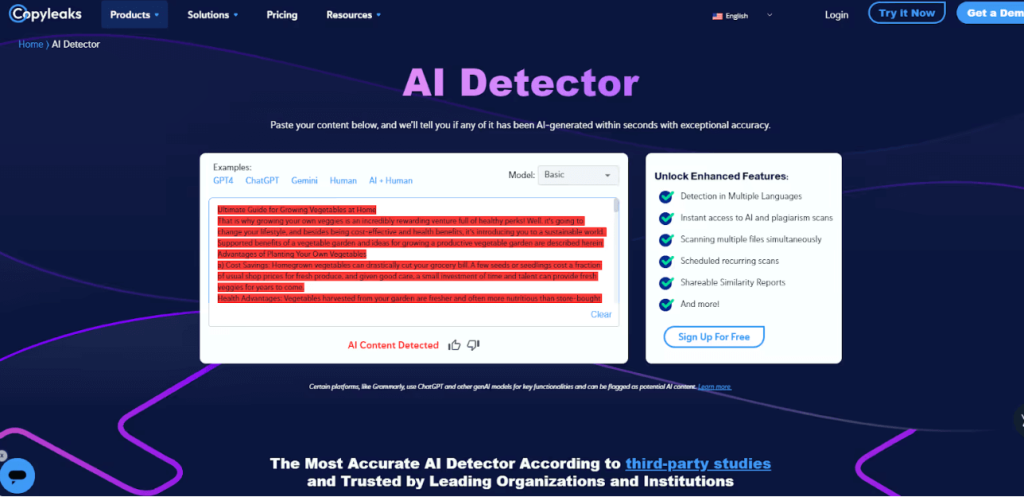
Humbot version: 100% AI & 0% Human-written
Findings Explained
The testing results show something interesting. Humbot did not really change the scores that measure AI content detection. The exception was Writer AI. It also didn’t identify the content from ChatGPT. Let’s dive a bit deeper. Humbot did make some changes. But, trying to avoid detection led to some confusions. Parts of the text became unclear or awkwardly put together. Want to see what I mean? Let’s look at a few examples from the start of the text.
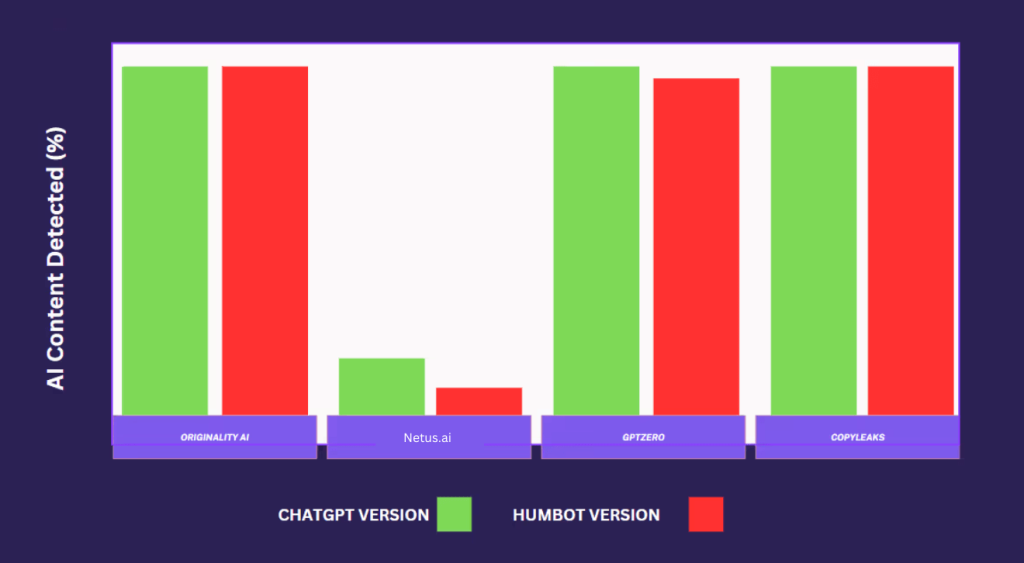
Before

After

Before

After

In simpler terms, Humbot doesn’t make AI text sound more like us, people. It just changes every third or fourth word using a powerful dictionary. Because of this, people can end up reading very long and tricky sentences.
The best way to go is using AI tools a little bit. Also, what’s really important is to show your special view of things. This makes everything you write more attractive.
The Science Behind AI Detection: How Do Detectors Work?
Tools have been invented to spot the differences between the writings of humans and those made by AI. They look at how sentences are built, the words chosen, and how likely it is for certain words to pair up. Normally, AI makes sentences gramatically correct, but doesn’t always understand context like humans do.
There are advanced tools like GPTZero and Originality.ai that take this to another level. They’ve learned from studying lots of human writing and AI writing. These tools can pick out things like overused phrases, unusual changes in topic, or uncommon words—usually signs of AI. They may also look at whether a piece of writing surprises them or whether it varies in sentence length and complexity. From all this, they give a rating on how human-like a text seems.
But there’s a but. The better AI gets, the harder it becomes to separate human and AI writing. Models like ChatGPT or GPT-4 write increasingly like humans. It’s a constant back and forth; as AI improves, so must the tools that find them. But it’s not perfect, especially when tools like Humbot work to hide the signs of AI.
The Limitations of AI-to-Human Conversion Tools
Tools like Humbot aim to take the mechanical feel out of AI-generated text, transforming it into something that feels more human. But they’re not flawless. Often, these tools depend on straightforward tricks, like swapping out words for equivalents or mixing up sentence structures, to breathe life into the content. Problem is, these adjustments tend to stumble at capturing the finer nuances of human speech – like the mood, cultural backdrop, or the emotional shades dotted throughout.
There’s another hurdle too – readability. In a bid to dodge AI detectors, some of these tools end up twisting sentences into complex knots or lacing in awkward phrases. Ironically, this makes it tougher for actual readers to digest the text. On top of this, too much tinkering can warp the original point of the text, a real issue when the topic on hand demands precision or heavy-duty expertise.
And there’s one last thing – genuine creativity and personal experiences are irreplaceable. These tools, while great for polishing grammar or cleaning up clunky sentences, struggle to sprinkle in exclusive insights, personal stories or stamp the content with a unique voice. In the real-world, they’re better suited as side-kicks rather than sole saviours, especially for people on the hunt for stellar, draw-you-in kind of content.
FAQ: Humbot AI
Can You Access Humbot AI for Free?
Yes, Humbot AI is available for free. However, if you wish to regularly use the platform for AI text, there’s a small monthly subscription fee you’ll have to pay.
What is Humbot?
Humbot promotes itself as a tool that can modify AI text. This change supposedly enables the text to avoid detection from AI tracking tools while maintaining correct grammar and spelling.
How Can I Make AI Text Go Undetected?
Honestly, there’s no ‘AI humanizer’ tool that promises untraceable AI-created text without heavily compromising its quality.
To best ‘humanize AI text’, one could use AI content creation aids in moderation and integrate their output with textual content created by humans. This creates a jointly developed approach that can yield beneficial results.
Is it Ethical to Use AI-Based Writing Tools?
As the capabilities of AI evolve, many are predicting its potential uses (and restrictions). AI-based writing aids can be incredibly useful for idea generation and enhancing productivity if used responsibly. However, ethical dilemmas may surface when transparency about their usage is murky.
Related Posts
Through digital leadership we empower people to leverage the opportunities in global economy

